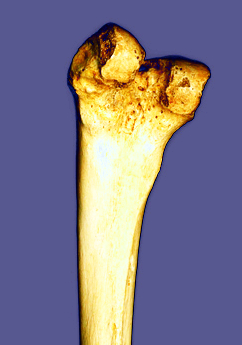Local tech used for 3D-printed bone
 Queensland researchers have seen their work realised in the form of the first ever 3D-printed shin bone.
Queensland researchers have seen their work realised in the form of the first ever 3D-printed shin bone.
Queensland University of Technology (QUT) research and technology has been used for a 3D-printed shin bone implant for a young Gold Coast man to replace bone lost through an infection.
QUT’s Professor Dietmar Hutmacher leads a centre at the uni that is at the frontier of 3D printing in medicine.
“We firstly developed a computer model and 3D printed a series of physical models of the large bone defect from CT scans of the patient’s tibia bone and then designed a patient-specific implant in the form of a highly porous scaffold which will guide the regeneration of the new bone,” he said.
“The QUT team used a 3D printer from the Queensland-based company 3D Industries to print the models and then the final scaffold design was sent to Osteopore International, an industry partner in the ARC ITTC which has more than 10-year clinical track record for their FDA-approved and CE-marked biodegradable scaffolds.”
Professor Hutmacher and his colleague Dr Michael Wagels have started an innovative PhD training program in which young surgeons are trained and perform cutting-edge research in 3D printing in medicine to meet Australia’s need to build capacity in key areas of economic importance.
“Next to the ambition to deliver outstanding fundamental science & engineering, from a business and human capital perspective, my vision for the ARC ITCC in Additive Biomanufacturing is to deliver an exceptionally talented group of entrepreneurs who will start high-impact companies,” he said.
“They will have their roots in globally competitive fundamental and applied STEM research as well as in manufacturing innovation and new medical devices.
“This vision is in line with the Chief Scientist’s call for the Australian Government to build entrepreneurship into education at all levels, as part of a national strategy to prepare Australia and Australians for prosperity through innovation in the decades ahead.”







 Print
Print